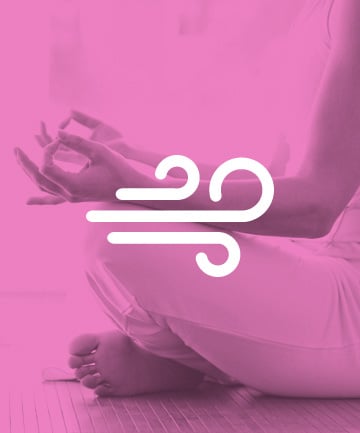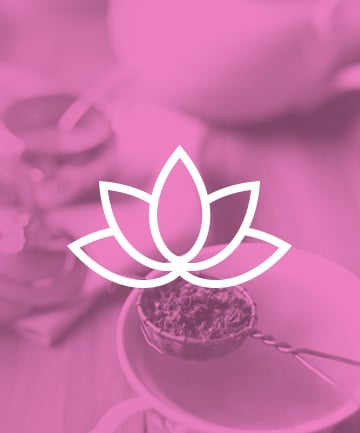Mindfulness meditation (MM) has been around for thousands of years, and it helps us focus our attention on what's happening around us and live in the present moment. In addition to the benefits listed earlier, regular practice of MM can help us more objectively analyze ourselves and improve concentration.
In order to bring your mind and body together in the present, MM focuses on breath -- not necessarily controlling it, but being aware of each breath you take and how it connects with your body. One of the perks of practicing this form of meditation is that while it's always ideal to practice in a quiet, comfortable space, MM is practiced with the eyes open and is about letting your mind objectively flow through thoughts -- so not only is the set-up simple, you can practice for any length of time.
In order to bring your mind and body together in the present, MM focuses on breath -- not necessarily controlling it, but being aware of each breath you take and how it connects with your body. One of the perks of practicing this form of meditation is that while it's always ideal to practice in a quiet, comfortable space, MM is practiced with the eyes open and is about letting your mind objectively flow through thoughts -- so not only is the set-up simple, you can practice for any length of time.
Probably the most popular form of meditation in the U.S., according to Bernstein, transcendental meditation (TM) focuses on reaching a restful state of mind. Rather than being based in chanting or breath, TM is simply about transcending the thought process. You learn to relax the active mind (you know, that part of your brain that's running through the never-ending list of things you have to get done) and come into a state of calmness.
TM can be practiced anywhere that you are able to comfortably sit and close your eyes, without distraction, and it's recommended that you practice for 20 minutes, twice a day. While it may seem impossible to shut out that to-do list, to practice TM, all you have to do is think about focusing your attention inward and your mind will follow (much like when you get drawn into a good book or movie). You can adopt a mantra if you choose, or sit quietly until your time is up (consider setting a timer), or you've reached a state of relaxation.
TM can be practiced anywhere that you are able to comfortably sit and close your eyes, without distraction, and it's recommended that you practice for 20 minutes, twice a day. While it may seem impossible to shut out that to-do list, to practice TM, all you have to do is think about focusing your attention inward and your mind will follow (much like when you get drawn into a good book or movie). You can adopt a mantra if you choose, or sit quietly until your time is up (consider setting a timer), or you've reached a state of relaxation.
This form of meditation combines the breathing techniques of mindfulness meditation with the mantras in transcendental meditation as well as mudras (think the thumb-to-index-finger pose associated with meditating).
You should always end your practice slowly, taking a minute to bring your awareness back to your surroundings. Bernstein says it's also important -- particularly if you're practicing for more than several minutes -- to do something that grounds you and brings you back in to your body. She recommends doing something as literal as stomping your feet on the ground, or simply have a snack or a cup of tea to re-center yourself and go about your day.









